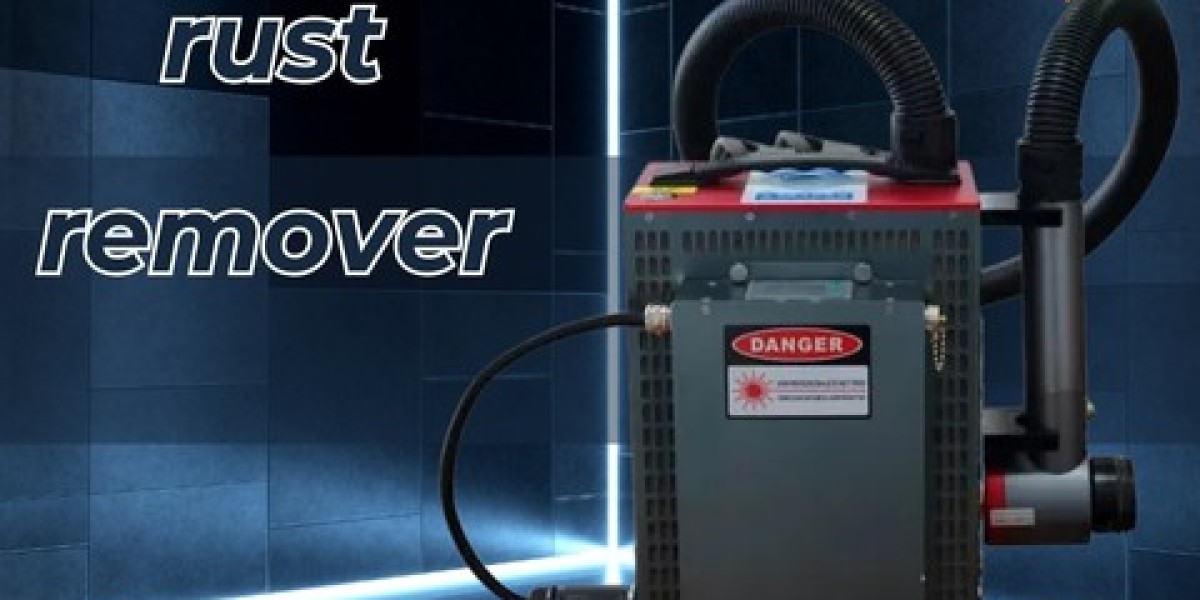Traditional methods for rust removal often involve abrasive tools, chemicals, or lengthy processes, which can damage the surface or be labor-intensive. The laser rust remover offers a revolutionary solution that addresses these issues effectively.
Understanding How Laser Rust Removal Works
A laser rust remover employs advanced laser technology to target rust molecules on the metal surface. The device emits a focused laser beam that vaporizes the rust layer without affecting the underlying metal. The process is highly precise, allowing operators to clean even intricate or hard-to-reach areas. Unlike chemical treatments, laser rust removal does not introduce additional substances to the metal surface, making it a cleaner and more environmentally friendly option.
The laser interacts with the rust by breaking down its molecular structure through heat energy. The intensity of the laser can be adjusted depending on the thickness of the rust layer and the type of metal. For instance, mild steel, stainless steel, and iron may require different laser power settings to ensure optimal results without causing surface damage.
Applications of Laser Rust Removal
Laser rust removers are used in multiple industries due to their precision and efficiency. In automotive restoration, they are ideal for removing rust from body panels, engine parts, and metal frames without compromising the original structure. Manufacturers in the aerospace sector rely on laser rust removal to maintain aircraft components, ensuring safety and longevity. Shipbuilding and marine industries also benefit from this technology, as it efficiently removes corrosion caused by prolonged exposure to saltwater environments.
Even smaller-scale applications, such as antique restoration or art conservation, find laser rust removers invaluable. They allow restorers to clean delicate objects without abrasive handling, preserving the material while eliminating corrosion. For workshops and factories, laser rust removal provides a faster alternative to traditional sandblasting or chemical treatments, significantly reducing downtime and labor costs.
Operational Considerations
Using a laser rust remover requires understanding the type of metal, the extent of corrosion, and the appropriate settings for the device. Operators need proper training to handle the equipment safely and effectively. Safety measures include protective eyewear to shield against laser exposure and controlled working environments to prevent accidental reflection of the laser beam.
The device itself is generally lightweight and portable, enabling easy maneuverability around various metal surfaces. Many laser rust removers come with adjustable power settings and scanning options, allowing operators to fine-tune the process according to the specific needs of each project. Some advanced models incorporate automated scanning systems for consistent cleaning over large surfaces.
Environmental and Efficiency Benefits
One of the most significant aspects of laser rust removal is its environmental impact. Traditional rust removal often relies on chemical solutions, which can be hazardous and require careful disposal. Abrasive methods, on the other hand, generate metal dust that can pose health risks if inhaled. Laser rust removal eliminates these concerns, as it produces minimal waste and does not involve harmful chemicals.
From an efficiency perspective, laser rust removers save considerable time. A process that might take hours with chemical baths or manual sanding can be completed in minutes using a laser. This efficiency translates into cost savings, as less labor and fewer materials are needed for rust management.
Maintenance and Longevity of Laser Rust Removers
Proper maintenance ensures that a laser rust remover operates at peak performance. Cleaning the lens regularly, checking the calibration, and inspecting internal components are essential for consistent results. The devices are generally durable and designed for long-term use, making them a reliable tool for professionals who require consistent rust removal on various projects.
Investing in a laser rust remover provides a combination of precision, safety, and long-term cost efficiency. It is suitable for industries, workshops, and hobbyists seeking a solution that preserves the integrity of metal surfaces while eliminating rust effectively.
Training and Skill Development
While laser rust removal is technologically advanced, it still requires skill for optimal outcomes. Operators should undergo training programs to understand laser dynamics, safety protocols, and surface preparation techniques. Mastery of these skills ensures that rust removal is efficient, precise, and safe, minimizing the risk of damage or accidents during operation.
Industry Adoption and Future Trends
The adoption of laser rust removers is growing across sectors. Industries are recognizing the long-term benefits of integrating this technology into regular maintenance schedules. With continuous innovation, laser devices are becoming more compact, affordable, and energy-efficient. Future trends indicate further automation, enabling robotic systems to perform rust removal tasks with minimal human intervention.
Laser rust removal is no longer a niche solution—it is increasingly seen as an essential tool for quality maintenance and restoration practices across multiple industries. As technology continues to advance, its application will expand, and its efficiency will improve, making it a standard method for managing rust.
Final Thoughts
The laser rust remover represents a modern, precise, and efficient approach to maintaining metal surfaces. Its ability to remove rust without chemicals or abrasion, combined with its adaptability to various metals and applications, makes it a valuable tool for both industries and individual users. Understanding the technology, applying proper operational techniques, and following safety measures are key to achieving the best results. As industries continue to prioritize efficiency, quality, and environmental responsibility, laser rust removal is positioned as a reliable solution for rust management now and in the future.








